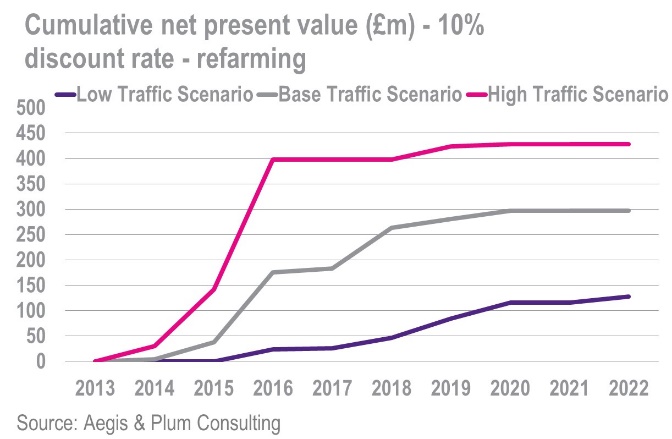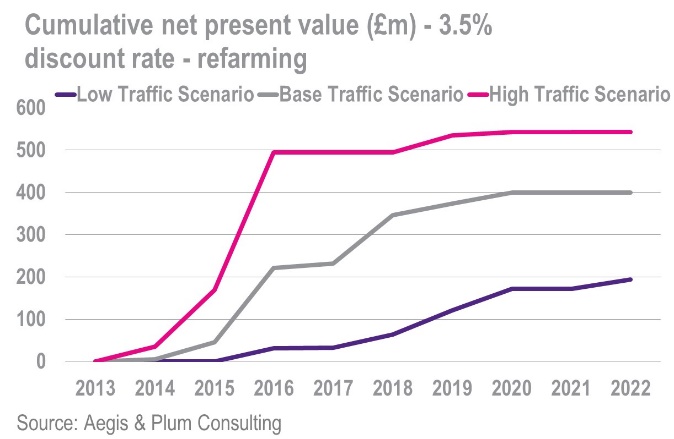Plum and Aegis conducted an economic impact assessment for the DCMS on allowing the use of 2.6 GHz spectrum for mobile broadband in the UK via the protection of aeronautical radars operating in the adjacent 2.7 GHz band. The economic benefits considered include higher speed broadband and infrastructure costs avoided with additional spectrum availability.
The study examined the extent of denial of high power use of 2.6 GHz for mobile broadband without protection of radars and concluded that almost no use would be feasible in most populated areas. This meant that nearly all the benefits of 2.6 GHz are dependent on early mitigation of the interference problem. The gross benefits in terms of avoided costs were then quantified.


The study concluded that, assuming use of 2.6 GHz spectrum for mobile broadband is advanced by 5-10 years via a part government funded radar protection programme, the gross benefits are substantial – at a minimum around £50 million under a low growth scenario and around £400-£500 million under central and high growth scenarios.
